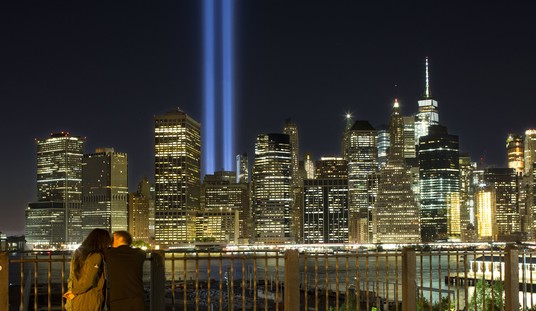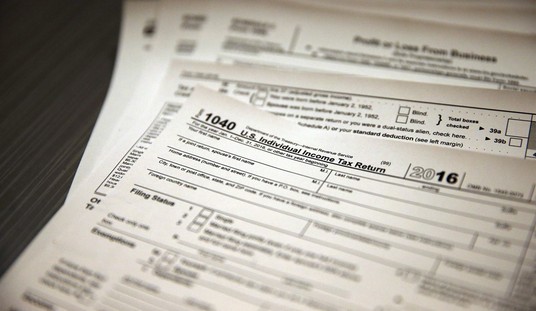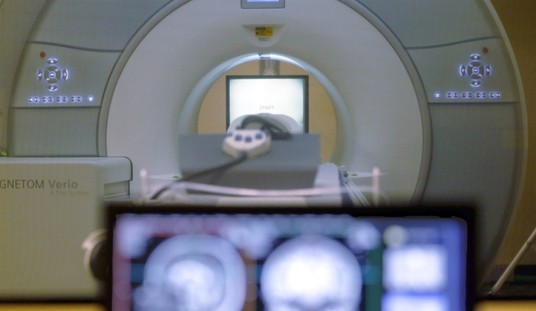A fascinating Supreme Court order was issued late on Wednesday night putting a halt to “color-coded” restrictions on gatherings in the state of New York which — had they remained in place — would have limited religious gatherings to either 10 or 25 people depending on which colored circle the spinning arrow from the game “Twister” stopped on.
By a vote of 5-4, the Supreme Court found that the public health justifications pursuant to concerns about the spread of COVID-19 no longer carry the day when they interfere with the free exercise of religion, which is an express and fundamental constitutional right guaranteed all citizens by the First Amendment. The majority opinion was issued “Per Curiam” meaning no one Justice was the author, but the contents of the opinion were agreed upon by the five-Justice majority.
More interesting from a jurisprudential point of view are the five concurring and dissenting opinions written by individual Justices who wished their own views to be seen on the issue before the Court.
The first procedural issue to understand is that this particular case is not now pending before the Supreme Court. Rather, this case is pending before the Second Circuit Court of Appeals in New York, which had turned down a request by the Plaintiff in the case — the Roman Catholic Diocese of Brooklyn — for similar relief. The Plaintiff then filed a motion for an emergency stay with the Supreme Court.
At the time the petition was filed, Gov. Cuomo had declared that certain parts of New York City would be designated as “red zones” and “orange zones” which meant that non-exempt organizations — including religious institutions — would be limited to indoor gatherings of no more than 10 and 25 people, respectively, depending on the specific zone in which the religious meeting place was located.
Both the Diocese and Agudath Israel maintain that the regulations treat houses of worship much more harshly than comparable secular facilities. And they tell us without contradiction that they have complied with all public health guidance, have implemented additional precautionary measures, and have operated at 25% or 33% capacity for months without a single outbreak.
The majority opinion then goes on to note the kinds of secular organizations and activities within red zones that are exempt from the gathering limits:
In a red zone, while a synagogue or church may not admit more than 10 persons, businesses categorized as “essential” may admit as many people as they wish. And the list of “essential” businesses includes things such as acupuncture facilities, camp grounds, garages, as well as many whose services are not limited to those that can be regarded as essential, such as all plants manufacturing chemicals and microelectronics and all transportation facilities.
The majority opinion took notice of the fact that since the filing of the application, Gov. Cuomo had dropped some of the restrictions that prompted its filing, and the position advanced by the dissenting justices that the Court need not act on the petition for an emergency stay as a result:
The dissenting opinions argue that we should withhold relief because the relevant circumstances have now changed. After the applicants asked this Court for relief, the Governor reclassified the areas in question from orange to yellow, and this change means that the applicants may hold services at 50% of their maximum occupancy. The dissents would deny relief at this time but allow the Diocese and Agudath Israel to renew their requests if this recent reclassification is reversed…. [I]njunctive relief is still called for because the applicants remain under a constant threat that the area in question will be reclassified as red or orange…. The Governor regularly changes the classification of particular areas without prior notice. If that occurs again, the reclassification will almost certainly bar individuals in the affected area from attending services before judicial relief can be obtained… Moreover, if reclassification occurs late in a week, as has happened in the past, there may not be time for applicants to seek and obtain relief from this Court before another Sabbath passes. Thirteen days have gone by since the Diocese filed its application, and Agudath Israel’s application was filed over a week ago.
That was, for all practical purposes, the basis upon which the emergency stay was granted, and the response of the nameless majority to the views of the dissenting opinion. But when the Justices put their names to their views, matters took a bolder turn — signally in a coming judicial “onslaught” on governmental interference with the free exercise of religion in this country.
I note at the outset that it seems meaningful — as it should be — to several justices that “Congress shall make no law … prohibiting the free exercise” of religion.
The Court has been involved for many years in a battle over the tension between this express prohibition and guarantee written into the Bill of Rights adopted at the nation’s founding, with other “discovered” rights that have “evolved” from the Court’s constitutional jurisprudence — for the most part in the last 50 years. The elevation to the Court of several “textualist” and “originalist” conservatives on the Court foretold this conflict, and the late Justice Scalia prepared the “battlefield” over which many of these fights will play out in the years to come.
The confirmation of Justice Amy Coney Barrett seemingly creates the needed “critical mass” of five Justices who are willing to express skepticism at the notion that “religions liberty” must yield to amoral non-secularism in the form of “individual liberty.”
As for the individual opinions, Justice Gorsuch comes roaring out by taking a flamethrower to the Chief Justice — not on just one issue but on two. To me, his language borders on intemperate and likely to leave a mark on the relationship between the two. I agree with Gorsuch on the merits of his points, but I’m still a bit taken aback by the force with which he advances them here on a petition for emergency relief. There is some real “drawing a line in the sand” stuff here, and his thinly-veiled expression of disdain would make have made Justice Scalia blush — and chuckle under his breath.
What could justify so radical a departure from the First Amendment’s terms and long-settled rules about its application? Our colleagues offer two possible answers. Initially, some point to a solo concurrence in South Bay Pentecostal Church v. Newsom, 590 U. S. ___ (2020), in which THE CHIEF JUSTICE expressed willingness to defer to executive orders in the pandemic’s early stages based on the newness of the emergency and how little was then known about the disease. Post, at 5 (opinion of BREYER, J.). At that time, COVID had been with us, in earnest, for just three months. Now, as we round out 2020 and face the prospect of entering a second calendar year living in the pandemic’s shadow, that rationale has expired according to its own terms. Even if the Constitution has taken a holiday during this pandemic, it cannot become a sabbatical. Rather than apply a nonbinding and expired concurrence from South Bay, courts must resume applying the Free Exercise Clause. Today, a majority of the Court makes this plain. Not only did the South Bay concurrence address different circumstances than we now face, that opinion was mistaken from the start. To justify its result, the concurrence reached back 100 years in the U. S. Reports to grab hold of our decision in Jacobson v. Massachusetts, 197 U. S. 11 (1905). But Jacobson hardly supports cutting the Constitution loose during a pandemic. That decision involved an entirely different mode of analysis, an entirely different right, and an entirely different kind of restriction.
For Supreme Court language, this is DEFCON 2 kind of stuff.
The South Bay decision came just a couple of months into the pandemic when shut-down orders from the Governor of California were challenged by religious institutions on the basis that similar-sized gatherings for non-religious organizations were allowed while religious gatherings were deemed “non-essential.” The Chief Justice joined with the then four liberals on the Court to uphold the Governor’s orders, doing so on the basis of a 1905 case concerning enforced vaccinations in response to a public health crisis caused by an outbreak of smallpox. Residents who refused to be vaccinated were made to pay a $5 fine.
Without the benefit of meaningful analysis, the Chief Justice found in Jacobson a basis for deference to the decisions by state Executives on matters of public health in the time of a pandemic. What Justice Gorsuch and other conservatives have pointed out since is that Jacobson 1) didn’t involve a competing constitutional interest such as religious liberty, and 2) Jacobson predates the more modern 14th Amendment liberty jurisprudence that involves levels of “scrutiny” courts must bring to bear on government regulations depending on the type of liberty interest that is being burdened.
Although Jacobson predated the modern tiers of scrutiny, this Court essentially applied rational basis review to Henning Jacobson’s challenge to a state law that, in light of an ongoing smallpox
pandemic, required individuals to take a vaccine, pay a $5 fine, or establish that they qualified for an exemption… Rational basis review is the test this Court normally applies to Fourteenth Amendment challenges, so long as they do not involve suspect classifications based on race or some other ground, or a claim of fundamental right. Put differently, Jacobson didn’t seek to depart from normal legal rules during a pandemic, and it supplies no precedent for doing so. Instead, Jacobson applied what would become the traditional legal test associated with the right at issue—exactly what the Court does today. Here, that means strict scrutiny: The First Amendment traditionally requires a State to treat religious exercises at least as well as comparable secular activities unless it can meet the demands of strict scrutiny—showing it has employed the most narrowly tailored means available to satisfy a compelling state interest…
But in the South Bay case the Chief Justice did not apply “strict scrutiny” to reach his decision, and he was the fifth vote upholding Gov. Newsom’s restrictions on religious gatherings. He made no reference to the “standard of review” the Court should employ, and instead gave almost plenary authority to Executives such as Governors in times of public health emergencies as an exercise of “police powers”. It is no small matter that Justice Gorsuch — now with five votes on his side — referred to the Chief Justices’s “nonbinding and expired concurrence” as “mistaken from the start.”
Tellingly no Justice now disputes any of these points. Nor does any Justice seek to explain why anything other than our usual constitutional standards should apply during the current pandemic. In fact, today the author of the South Bay concurrence even downplays the relevance of Jacobson for cases like the one before us. Post, at 2 (opinion of ROBERTS, C. J.). All this is surely a welcome development. But it would require a serious rewriting of history to suggest, as THE CHIEF JUSTICE does, that the South Bay concurrence never really relied in significant measure on Jacobson. That was the first case South Bay cited on the substantive legal question before the Court, it was the only case cited involving a pandemic, and many lower courts quite understandably read its invocation as inviting them to slacken their enforcement of constitutional liberties while COVID lingers. See, e.g., Elim Romanian Pentecostal Church v. Pritzker… Legacy Church, Inc. v. Kunkel.
Why have some mistaken this Court’s modest decision in Jacobson for a towering authority that overshadows the Constitution during a pandemic? In the end, I can only surmise that much of the answer lies in a particular judicial impulse to stay out of the way in times of crisis. But if that impulse may be understandable or even admirable in other circumstances, we may not shelter in place when the Constitution is under attack. Things never go well when we do.
As someone who has read a lot of Supreme Court cases over more than three decades, this is close to “blow torch and pliers” territory between two Justices ostensibly aligned from a jurisprudential point of view. This five-vote majority — not coming from a case before the Court but rather in response to an emergency petition — changes everything now pending in lower courts regarding coming challenges to lock-down orders that may be imposed by governors in the days and weeks ahead.
Do not overlook Gorsuch’s view that “shelter-in-place” orders are an “attack” on the Constitution. This is a religious liberty case, but the overt hostility of Justice Gorsuch is revealing, and I suspect it is going to extend to other burdens imposed on individual liberties by the orders.
Justices write concurring opinions without needing to get other Justices to join them in the words they use, and no other Justice joins the Gorsuch concurrence.
Justice Kavanaugh writes his own dissent suggesting that he’s in alignment with the Chief Justice but for the issue of timing — he disagrees to the extent that the Chief Justice counsels that the Court should take note of the fact that the “color code” for the Plaintiff churches changed while the matter was pending. To Kavanaugh, it is significant that the Executive Order remains valid and in force, and the change in color code status can come at any time, and it is the Executive Order — not the change in status — that the Plaintiffs are challenging. Justice Kavanaugh also notes that South Bay and the cases that followed it are distinguishable because the restrictions in New York are much more severe than the restrictions that were allowed in the earlier cases. He does not mention, however, the reliance of the Chief Justice on Jacobson in South Bay when providing the fifth vote in that case.
In his response, dissenting from the majority, the Chief Justice fires back at Gorsuch:
One solo concurrence today takes aim at my concurring opinion in South Bay… Today’s concurrence views that opinion with disfavor because “[t]o justify its result, [it] reached back 100 years in the U. S. Reports to grab hold of our decision in Jacobson v. Massachusetts, 197 U. S. 11 (1905).” Ante, at 3. Today’s concurrence notes that Jacobson “was the first case South Bay cited on the substantive legal question before the Court,” and “it was the only case cited involving a pandemic.” Ante, at 5. And it suggests that, in the wake of South Bay, some have “mistaken this Court’s modest decision in Jacobson for a towering authority that overshadows the Constitution during a pandemic.” Ibid. But while Jacobson occupies three pages of today’s concurrence, it warranted exactly one sentence in South Bay. What did that one sentence say? Only that “[o]ur Constitution principally entrusts ‘[t]he safety and the health of the people’ politically accountable officials of the States ‘to guard and protect.’” South Bay, 590 U. S., at ___ (ROBERTS, C. J., concurring) (quoting Jacobson, 197 U. S., at 38). It is not clear which part of this lone quotation today’s concurrence finds so discomfiting. The concurrence speculates that there is so much more to the sentence than meets the eye, invoking—among other interpretive tools—the new “first case cited” rule. But the actual proposition asserted should be uncontroversial, and the concurrence must reach beyond the words themselves to find the target it is looking for.
The last bolded sentence is a language that clearly mocks the Gorsuch concurrence. But the Chief Justice is wrong here — I have seen references to his concurrence in South Bay used in a dozen lower court decisions upholding executive “stay at home” and “shelter in place” orders during the pandemic. “The Chief Justice said it’s within the Executive’s authority” blah blah blah, is the standard response in opposition papers filed against complaints seeking to enjoin executive restrictions. I was involved in one such anticipated piece of litigation that became moot days ahead of filing when the Governor involved lifted the restrictions on religious gatherings in the state in question.
And the heart of Justice Gorsuch’s criticism is exactly what the Chief Justice acknowledges — he cited Jacobson in his concurring opinion in South Bay as a basis for upholding executive action without taking the time to seriously consider the underlying constitutional questions and whether — in 2020 — the Jacobson decision from 1905 reflected current constitutional jurisprudence. That the Chief tries to walk back from that point by saying he intended no such reliance by lower courts does just what Justice Gorsuch claims — it rewrites history.
It is likely that the Chief and Gorsuch are going to be on opposite sides of election litigation cases that are likely to begin coming through the Court — they may already be in discussions that take place behind closed doors – and what we see here may be significant in that regard. It has been decades since a Chief Justice aligned himself with a minority bloc on the Court.
I do not expect that to be where Roberts ends up. I do not think he has a reliable “ally” he can pull to the “center” to create five votes by joining with the three court liberals. I do not think Justice Kavanaugh will be that vote.
Of all the five conservative Associate Justices, Gorsuch was the one I feared might be that “swing vote” — as he proved to be in the Title VII “sex” discrimination case last term. But the language in this opinion strongly suggests that Roberts and Gorsuch are not going to be this Court’s “Kennedy and O’Connor”.













Join the conversation as a VIP Member